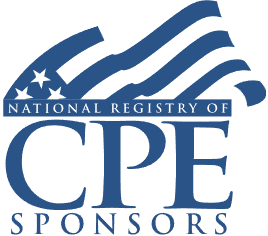Minimizing Capital Gains on Residence Sales: Sec 121 Ownership and Use Tests, Partial Exclusions, Rental Property

Course Details
- smart_display Format
On-Demand
- signal_cellular_alt Difficulty Level
Intermediate
- work Practice Area
Tax Preparer
- event Date
Thursday, August 19, 2021
- schedule Time
1:00 p.m. ET./10:00 a.m. PT
- timer Program Length
110 minutes
-
BARBRI is a NASBA CPE sponsor and this 110-minute webinar is accredited for 2.0 CPE credits.
-
BARBRI is an IRS-approved continuing education provider offering certified courses for Enrolled Agents (EA) and Tax Return Preparers (RTRP).
-
Live Online
On Demand
This course will discuss ways to avoid and minimize capital gains tax on the sale of a residence. Our income tax expert will discuss partial exclusions, use and ownership tests, renting before and after living in a primary residence, and calculating and reporting the Section 121 exclusion.
Faculty

Mr. Mathis is a founding partner of Anderson Law Group and current manager of Anderson’s Las Vegas office. He has helped Anderson grow its practice from one of business and estate planning to a thriving tax practice and national registered agent service with more than 18,000 clients.
Description
For taxpayers who meet the ownership and use tests, the $250,000 exclusion for single taxpayers and the $500,000 exclusion for married people filing jointly provide significant tax savings. However, there are many common scenarios where taxpayers may not qualify for this relief, may qualify for a partial exclusion, or may have gains above these thresholds. In these cases, tax practitioners need to understand how to mitigate these tax burdens.
Additionally, many taxpayers have used their home as an office or rented their primary residence. This adds a new level of complexity to the gain calculations. A home office may require depreciation recapture. The taxation of residential rental property varies significantly depending on whether the home was rented before or after it was used as a primary residence.
Listen as our federal tax expert explains taxation of homes that have been rented or used as a home office, how to qualify and report a partial exclusion when a taxpayer does not meet the two out of five-year test, and how to meet the qualifying tests under IRC Section 121.
Outline
- Section 121 exclusion
- Qualifications
- Partial exclusions
- Determining basis
- Exceptions to the two out of five rule
- Sales after renting
- Sales after office in home
- Installment sales
- Section 1031 like-kind exchange
- Other considerations
Benefits
The panel will review these and other key issues:
- Circumstances qualifying for partial exclusion under Section 121
- Dissimilar tax consequences of renting your property before or after it was your residence
- Calculating depreciation recapture for office in home
- Determining basis and cost of sale deductions
NASBA Details
Learning Objectives
After completing this course, you will be able to:
- Identify a primary residence
- Determine depreciation recapture and when warranted
- Decide when a facts and circumstances approach to the partial exclusion may be worthwhile
- Ascertain specific scenarios that qualify as exceptions to the two out of five-year rule
- Field of Study: Taxes
- Level of Knowledge: Intermediate
- Advance Preparation: None
- Teaching Method: Seminar/Lecture
- Delivery Method: Group-Internet (via computer)
- Attendance Monitoring Method: Attendance is monitored electronically via a participant's PIN and through a series of attendance verification prompts displayed throughout the program
- Prerequisite: Three years+ business or public firm experience preparing complex tax forms and schedules, supervising other preparers or accountants. Specific knowledge and understanding of individual income taxation, including itemized deductions, individual income tax credits, net operating loss limitations including carrybacks and carryforwards.

Strafford Publications, Inc. is registered with the National Association of State Boards of Accountancy (NASBA) as a sponsor of continuing professional education on the National Registry of CPE Sponsors. State boards of Accountancy have final authority on the acceptance of individual courses for CPE Credits. Complaints regarding registered sponsons may be submitted to NASBA through its website: www.nasbaregistry.org.

Strafford is an IRS-approved continuing education provider offering certified courses for Enrolled Agents (EA) and Tax Return Preparers (RTRP).
Unlimited access to premium CLE courses:
- Annual access
- Available live and on-demand
- Best for attorneys and legal professionals
Unlimited access to premium CPE courses.:
- Annual access
- Available live and on-demand
- Best for CPAs and tax professionals
Unlimited access to premium CLE, CPE, Professional Skills and Practice-Ready courses.:
- Annual access
- Available live and on-demand
- Best for legal, accounting, and tax professionals
Unlimited access to Professional Skills and Practice-Ready courses:
- Annual access
- Available on-demand
- Best for new attorneys
Related Courses

New Opportunity Zone Incentives After OBBBA
Monday, August 11, 2025
1:00 p.m. ET./10:00 a.m. PT

2025 International Tax Legislation: One Big Beautiful Bill Act
Wednesday, July 16, 2025
1:00 p.m. ET./10:00 a.m. PT

OBBBA: New Section 951B Downward Attribution Rules and the Restoration of Section 958(b)(4)
Friday, August 8, 2025
1:00 p.m. ET./10:00 a.m. PT
Recommended Resources
How CPE Can Bridge the Gap Between What You Know and What You Need to Know
- Career Advancement